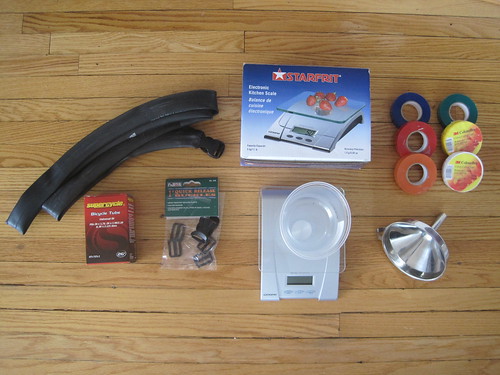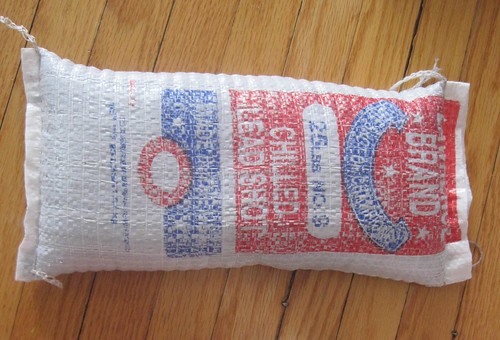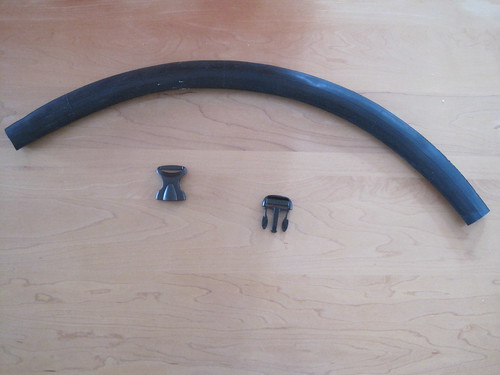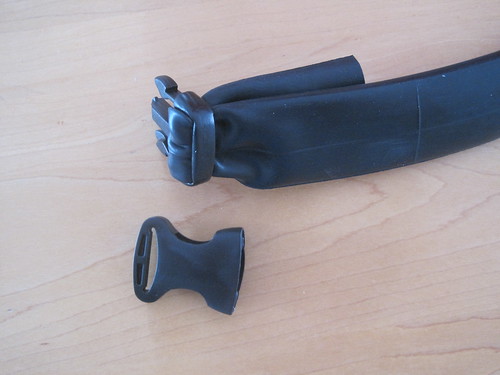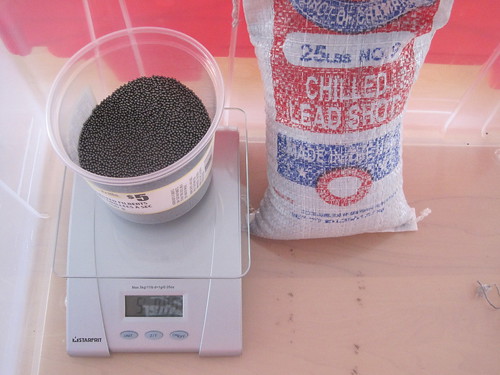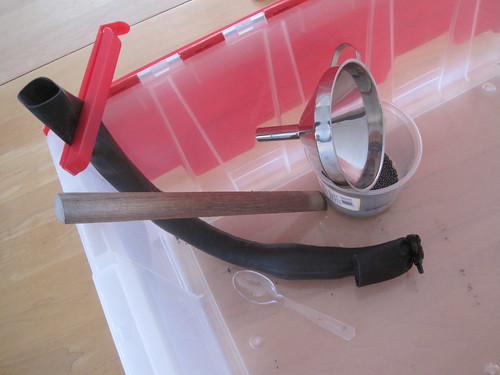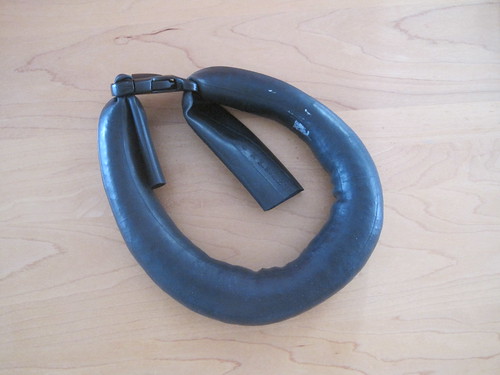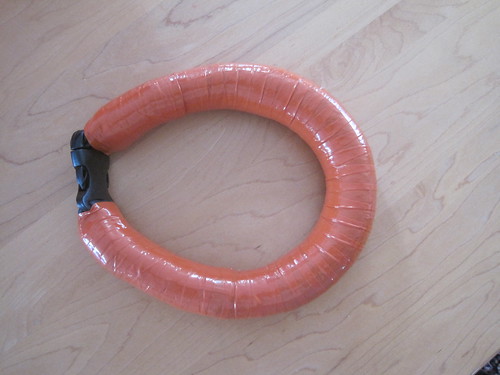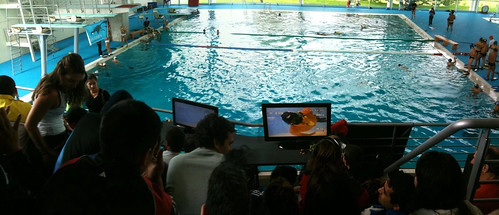It is not the freediving equipment that is important
Category: General
Great video to start off the New Year
This is a beautiful video showcasing freediving.
[youtube=http://youtu.be/u4z1Y0GI-9k]
More information about the people who made the video can be found here: http://www.weightlessemotions.com
Sara Cambell 104 m CWT
Sara Cambell dives to 104 meters in this very well done video.
It is not a rcognized record, but so what, it is still an amazing video worth watching.
Congratulation Sara, it is a pleasure to watch you dive.
[youtube=http://www.youtube.com/watch?v=rD5Mg0eiJdE&feature=colike]
Freedive Toronto on Citytv’s Breakfast Television
Toronto, Friday August 5, 2011
It was an early rise for the Freediving National Championships organizers, crew and athlete this morning as they appeared in today’s Breakfast Television show with Sangita Patell and the LiveEye crew at the Etobicoke Olympium Pool. Under the watchful eye of Freedive Toronto President and AIDA Instructor Doug Sitter, Sangita faced her long-standing fear of water and attempted a breath-hold performance called static apnea, which is a discipline of freediving done on one breath of air, face down in the water without the exertion of movement. This discipline is measure of time spent on a breath-hold (also called sportive apnea). For a first timer, Sangita did really well in her attempt, reaching a personal best of 56 seconds.
[youtube=http://www.youtube.com/watch?v=VYK3FTlnVqA]
Freediving & competition exposé
Since there’s a couple of competitions coming up in the near (and not-so-near) future, and since our freediving club is constantly growing, I wrote this little “essay” inviting newcomers to the sport (and those who may be a bit skeptical going into competitions) to participate in them. This is essentially based on my own personal experiences as a freediver. Hope you guys find it insightful and I hope it clears up some (if any) misconceptions.
I know – the idea seems pretty daunting, signing up for competition where there’s bound to be people who’ve been freediving for much longer than yourself, whether competitively or not. The intimidation worsens when you think of competing on a national level, alongside record-holders. It’s pretty easy to psyche yourself out and think you might not be up to scratch. However, I’m not writing this to point out how intimidating freediving in a competitive setting can be – I’m writing this to tell you why it shouldn’t stopyou, because the fact of the matter is, you are your own worst critic and you have only yourselfto stop you; when you dive, you shouldn’t be diving for anyone but yourself. That’s something I’m still trying to convince myself of, but I’m definitely getting there.
What I havelearned already (and pretty early on), however, is that the freediving community is a great support system. No one ridicules your ability to freedive and that’s true of the competitions as well. You do your best, and if you’ve gone beyond what you normally do, congratulations! If not? Well, you’ve done what you could and now you know what to do next, in order to do better the next time. Believe me when I say that theory has been tested. During my first Nationals competition in Monrteal, I forgot to put on my mask for the DYN category, which resulted in my swimming practically to the other end of the pool blind and diagonally, on what would have been a collision course with the freediver competing in the opposite lane, had I not been stopped by the Safety Divers. I was Disqualified and yes, and I felt like I’ve done something really stupid… but no one pointed fingers and laughed at me about it; in fact, I got a few thanks, even, for showing that such a thing were possible. I wasn’t even given a chance to feel embarrassed, with how nicely it was taken. The year after that (armed with a mask this time), I swam 76 meters in DYN, even though I’d managed to swim “100” in the pool during Monday practice. A freediver came up to me and asked how I did and whether or not that was a Personal Best. I told him I’ve done better in practice. He told me something along the lines of “It happens, don’t worry about it” because competitions are finicky things, sometimes – you’ll do great in practice, but the stress during a competition might get to you and you won’t do as well.
That’s not necessarily a bad thing, because it gives you something to work with and towards for the next time. As far as the number of metres you’re able to swim goes, that’s in all honesty your own concern – if you choose to worry about it (which, when you do, you actually aren’t really helping yourself). You just have to try your best and swim and stop fretting over how you’re going to do (unless, of course, you’re going for a record!). That’s it. No one’s going to give you a hard time about how much you’ve swam or how much you didn’t.
Everything in freediving is a learning experience.
One of the things I realized with competitions is that they are meant to be fun first and foremost; a gathering of people from different cities (and provinces), united by a common interest – freediving. Yes, hard work is required if you want a good result when it comes to the actual competing part, but you should be enjoying what you are doing as well. You go to practice because you want to, right? Not because you haveto, or are forcedto against your will. What’s great about competitions is that you’re able to meet with new (in the sense that you haven’t met them yet) freedivers, who will likely have something helpful to say, whether it be some kind of constructive feedback, or trying out a new technique, or finding the solution to a common or shared issue. There’s any number of things you could learn from experienced and fellow freedivers.
So I say that competitions shouldn’t be seen as brick walls standing in your way, but rather as stepping stones. They’re fun and you most definitely would learn something new that would help you along the way. They’re a way of putting yourself out there, regardless of ability, and you will receive nothing but positive reinforcement for your efforts. Just keep swimming.
Yaroslava Timoshenko
Making a Freediving Neck Weight
We often get asked about neck weights and I recently needed a heavier neck weight so I decided to create this post to show how to make one.
Below are two images showing the supplies needed.
The bag of lead pellets can be purchased at Bass Pro Shop or most other hunting stores. I bought a 25 lbs bag of very small pellets, but you might be able to find a store that carry smaller bags or maybe a dive shop that carry lead pellets. Bass Pro Shop also has the 1 inch buckles I used for my neck weight. I find 1 inch big enough to open even with cloves on and it isn’t as bulky as some of the larger buckles.
The scale, funnel and inner tube was purchased from Canadian Tire and the tape is from Home Depot. Only one color tape is needed, but I just wanted to show all the cool colors available.
The length of the bike tube should be the length of your neck circumference plus 20 cm. My neck is 40 cm and I cut off 60 cm of tube, which worked out nicely.
The thickness doesn’t matter as much, because the tube will expand, but I did made sure I didn’t buy a racing tire, which is very thin. The inner tube I bought can be used for a range of tire widths, ranging from 1.75″ to 2.125″.
There are a few ways of attaching the buckles and I have chosen the simplest solution. I find it has worked well on my last neck weight which has held up great for two years and show no signs of wear and tear. It can be a little difficult to get the tube through the ends of the buckle, but it only took me 5 minutes for the first and 2 minutes for the second buckle. Make sure to do the hardest of the buckles (if they are different) first, because the tube is easier to hold when it is empty.
There is a different way of attaching the buckle shown here from another blog: orangellous.
There are also great tips and discussions about neck weights at the Aida Canada Forums
The lead pellets are extremely small and hard to control, so make sure to do all the weighing and filling in a big plastic container. You should get some help from an instructor or experienced freediver with determining how much weight you need both with and without a wetsuit.
Filling the neck weight would have been hard without a funnel and I also found out that I needed a plunger. I am creating a 5 pound neck weight and all the pellets don’t fit in the tube without stamping them and expanding the tube a bit. I filled up about 10 cm of the bike tube and then used the stick to stamp the pellets. After stamping, the tube will mostly keep the thicker shape and more pellets can be added. I did this in 5 cm increments stamping each time and made sure I had about 15 cm of tube left after adding all the pellets.
The plastic clip was very useful when adding the second buckle. I placed the plastic clip tight to the pellets which allowed me to fairly easily add the second buckle and try on the neck weight for size. The size of the neck weight stretched out was about 47 cm, but bent it was only 43 cm and with tape it finally ended up a little over 42 cm inside.
The spoon in the picture was used to scoop up a few of the small guys that got away from me.
Above is the neck weight before I taped it and before I shaped it. Make sure to spend lots of time shaping it so it will be symmetrical and isn’t too thick in the sides. If you make it too thick in the sides it can be harder to get your arms correctly above your head for streamlining.
This is the final look of the neck weight with two layers of tape. I added two layers to make it as strong as possible and make sure none of the little pellets have a chance to get out and so water can’t get in.
This is almost identical to my previous neck weight which has been great so far. I will be using it for our freedive practices when I don’t wear a wetsuit. I will be creating a heavier neck weight for when I wear a wetsuit.
I hope this will help you make your own, but I will also be posting these neck weights for sale, because several people have said that they prefer to buy them instead of making them.
Family Vacation and training Benefits
Just came back from Long Island Bahamas… It’s been the second formal
training for me in the span of 3 months. The first one – last October in
Monrtreal with William Winram, member of the FreediveToronto club and World Cup
Champion – I wasn’t able to attend to the full extent (damn, I have to,
given the chance again!). This second training was actually during vacation
with my wife, which, quite conveniently, “coincided” with a depth training
course by another William – Trubridge, current World Record holder on CNF
and his wife Brittany, who is a Yoga instructor with an emphasis on
breathing techniques and lung exercising. Daily yoga practices (with one really
cool session which started at sunrise right on the cliff facing the Atlantic ocean),
diving off the platform on the Dean’s Blue Hole, the supernatural beauty of Long
Island, my October training in Montreal – all of these contributed to greatly
improve my depth range and confidence. The outcome? For the first time in my life,
I crossed the 40m depth mark and 30+ meter dives became much more
comfortable than ever before. There was also the pleasant surprise of meeting Carla
Sue-Hanson – she was assisting in our open water training. Carla is in pursuit of the
US National record for CNF diving. So if you’re looking to train for depth in warm
waters close to home, don’t think twice; Dean’s Blue Hole is hard to beat. It’s close
and accessible from Toronto on a 3 hr direct flight to Nassau and a few daily
connections to Long Island. There are no waves or thermocline at Dean’s Blue Hole,
hardly any currents, great visibility as well as a world-class dive setting.
Throw into the mix the super-friendly local people, fresh-off-the-sea
(definitely beats fresh-off-the-boat-and-into-the-freezer) seafood, excellent spearfishing
opportunities, miles and miles of white sandy beaches without a soul in sight and
you have the perfect place to train or just unwind and relax. This is our second trip to
Long Island and I hope there will be more like this in the future!
ALL ROADS LEAD TO THE DEAN’S BLUE HOLE!
……………………………………………………………………………………………………………………………………………………………………………………………….
[slideshow]
………………………………………………………………………………………………..
[youtube=http://www.youtube.com/watch?v=18CN5pXzi7Y&w=640&h=390]
Training CWT dive at The Blue Hole
Sergei
Mayan Riviera, Mexico – Family Fun and Freediving
January 1st 2011 we left snowy Toronto for a week on the Mayan Riviera in Mexico. We stayed at the Akumal Beach Resort, South of Playa Del Carmen and spent most of the time at this waterfront resort located on Akumal Bay. ( Akumal = Place of the Turtles) Lots of opportunities to snorkel/freedive on the reef. Also just a short walk to the North is Half Moon Bay a great place for an afternoon snorkel. Both reefs are a little worse for hurricane wear but Akumal attracts a lot of tourists for the beach and reef tours. We were able to enhoy as a family the snorkelling and at the same time I got to practise some breath hold photography putting my digital point and shoot camera in a small camera drybag from MEC (Mountain Equipment Co-op) here in Toronto.
We made two off resort trips the first was to the ruins at Coba and Tuluum, both were awesome.
Mid day we stopped at two Cenotes (underground caverns) for a refreshing swim and a little free diviving.
Our second trip was to the “Hidden Worlds” nature/adventure park just a short cab ride South of the resort. This featured jungle/cenotes tours, including the “sky cycle”, very novel and interesting. Also a number of unique zip lines through the canopy, and also two that splashed you down in the cenotes. The tour finished off with a guided snorkel into the depths of their cenotes which connects up with others in the extensive underground river system of the area.
We all had a great time, there is tons of good snorkelling, ruins and beach to keep any family busy for a week. The diving/snorkelling opportunities abound in this area and I needed to be careful to keep in mind that this was a family vacation and not a frediving adventure.
Rob
Bogota Botainical Gardens
Results Day 2/3 · Underwater Rugby
Game 3 – The game we Won!
New Jersey 4 / Unicauca 2
Unicauca is the city in Columbia where they are from. If felt good to win a game. This is the first game I played Guard. Gord played midfield and scored one of the 4 goals.
Game 4
Orcas B 5 / New Jersey 1
Orcas are from Medellin Columbia. This is the main centre for water sports in Columbia. Orcas A won the Ä division.
Gord and I have purchased DVDs of our final game and of the A and B division final.
The picture below was taken during the Division A final. We found out after that people were watching it live online. If I would have know I would have sent out a link.

